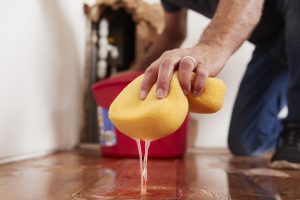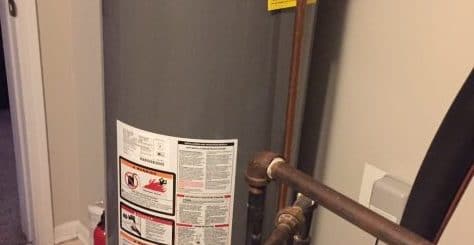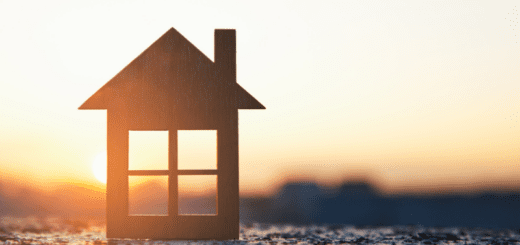Here are the most expensive home repairs—and how to avoid them
It’s true what they say: homeownership is a good investment. For many American homeowners, their property is their nest egg. They depend on its future value to grow so that they can fulfill their dreams of sending their kids to college, traveling the world, or retiring. However, like all investments, a home requires upkeep and a watchful eye. Without the right maintenanceMaintenance is the routine care, inspection, and repair of a... More and care, disaster can strike.
In this article, we’ll review several of the most costly home repairs, how you should deal with them, and what you can do to prevent them from occurring in the first place.
Plumbing leaks and water damage
Hidden behind walls, under your foundation, and in your ceiling is a network of water pipes that connect your sinks, tubs, showers, and appliances to the tap. In a way, our homes are filled with water. Yet, when that water is somewhere it shouldn’t be, the results can be disastrous.
Water damage is expensive to repairRepair is the act of fixing or restoring damaged property, m... More. It destroys flooring, damages drywall, and ruins personal belongings. Not only do you need to hire a plumber to fix the origin point of the leak, but you’ll also need to bring in a water restorationRestoration is the process of returning a property to its pr... More specialist to repairRepair is the act of fixing or restoring damaged property, m... More the damage and address any moldMold is a type of fungus that grows in damp or humid conditi... More growth. Water damage and mold remediation professionals can return your home to normal after a pipe leak or sewer backup. However, if possible, you are better off avoiding the problem altogether.
Here are just a few things you can do to avoid water damage in your home:
- Have a plumber inspect and maintain your water heater every year—especially if yours is more than 10 years old. Not only will a water heater flush help keep it running efficiently, but it gives the plumber an opportunity to find any defects before they leadLead is a heavy metal that can be toxic to humans, especiall... More to the failure of the tank.
- If you’ve previously had a pipe leak in your home, have a plumber or home inspector assess the status of the rest of your pipes. If you own an older home, you might be due for a re-piping.
- Noticing any change in how fast your drains move? Call a plumber who specializes in sewer camera inspections. They’ll feed an endoscopic camera down the drain and into the sewer line, looking for any clogs that are in the process of forming.
HVAC repairs and replacement
Your heating and cooling systems are some of the most important—and most valuable—components of your home. Repairing or replacing your air conditioner or furnace could end up costing you thousands of dollars. And, depending on the season, it’s not exactly a project that can wait, either.
You should do everything you can to avoid breakdowns and maximize the life of your HVAC systems. Here’s where to start:
- Schedule an annual tune-up for both your air conditioner and furnace in the spring and fall, respectively. Preventative maintenanceMaintenance is the routine care, inspection, and repair of a... More is the key to avoiding HVAC trouble and keeping your cooling and heating systems running right.
- If you notice something isn’t quite right—the system is running noisily, your indoor comfort is declining, or your latest utility bill was much higher than expected—call a professional. These could be the warning signs of impending HVAC problems.
- Finally, by making your home more energy-efficient, you can reduce the long-term wear-and-tear on your system, helping to extend its lifespan.
Roof damage
Your home’s roof is its shield against the elements. When that protective shield is compromised, bad things start to happen. Most roofing issues start relatively small—a missing shingle, or a clogged gutter—and quickly evolve into something much more serious and costly. A roof leak, for instance, combines all the problems and costs of water damage with the urgent need for potentially expensive roof repairRepair is the act of fixing or restoring damaged property, m... More or replacement work.
Most roof damage occurs as the roofing material deteriorates and is no longer able to protect the underlayment or the roof structureStructure refers to the framework or components of a buildin... More itself. However, damage can also happen suddenly, in a single storm. Broken branches and falling trees can cause catastrophic damage under the right conditions. At that point, you may also need to consult with a restoration specialist to check if there has been structural damage to your home.
While not every roofing problem can be avoided, here are a few ways you can protect your roof:
- Schedule an annual roofing checkup or inspectionInspection is the careful examination and assessment of a pr... More with a licensed and qualified roofing contractor in your area. They’ll be able to spot problems early and recommend a course of action.
- Act on their recommendations and have them make repairs as soon as possible. You could be a single storm away from catastrophe, so any procrastination could really come back to bite you.
- TrimTrim is the decorative or functional molding used to finish ... More trees down so that their branches don’t hang over the roof or potentially scrape up against it during storms. If you have large, older trees, talk to a local arborist about their health. Diseased or dying trees should be preemptively removed before they potentially fall onto your home or someone else’s home.
Be a proactive homeowner
If there’s a singular thread that links all of our recommendations together, it’s being a proactive homeowner. This doesn’t mean you have to be perfect or clairvoyant: some home disasters are just going to happen, no matter how much time and effort you spend maintaining your property. However, many other catastrophes can be prevented with the right mix of preventative maintenanceMaintenance is the routine care, inspection, and repair of a... More and heads-up action on your part.
Are you ready to learn more about how you can avoid expensive home repairs? Be sure to check out the infographic below. It has a full breakdown of the costs associated with each of the repairs listed above, along with information about foundation and structural repairs.














